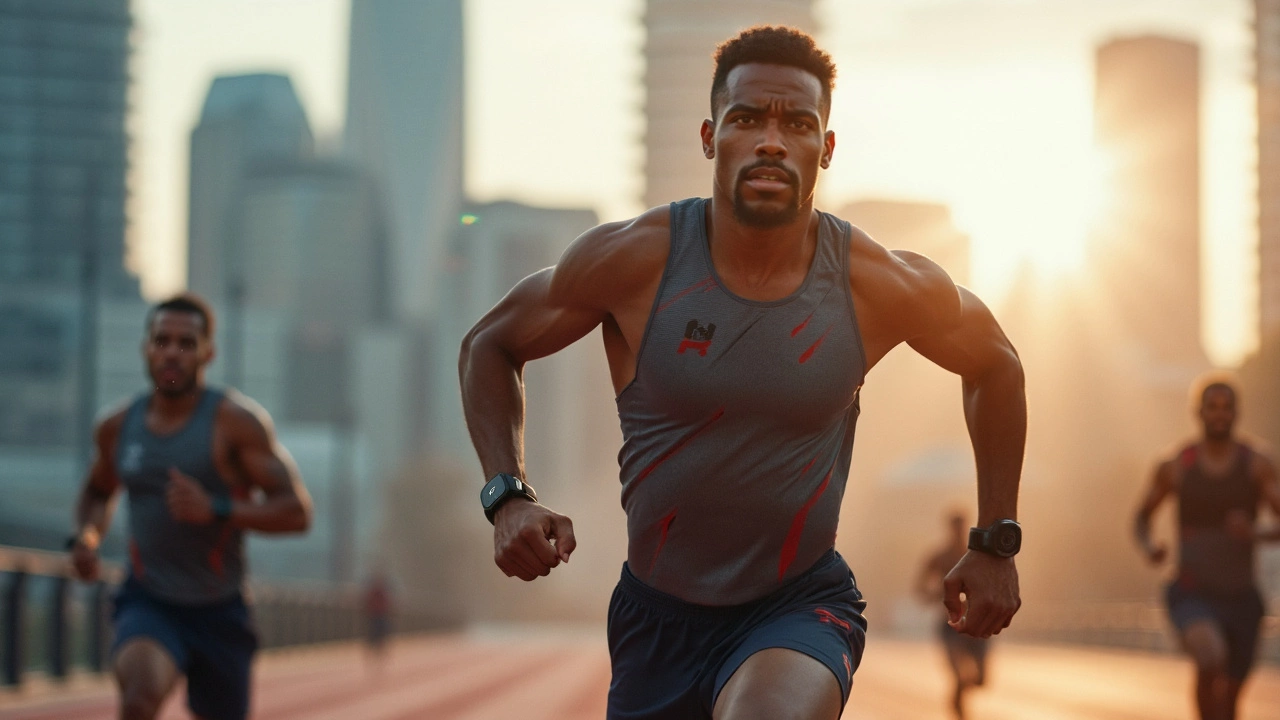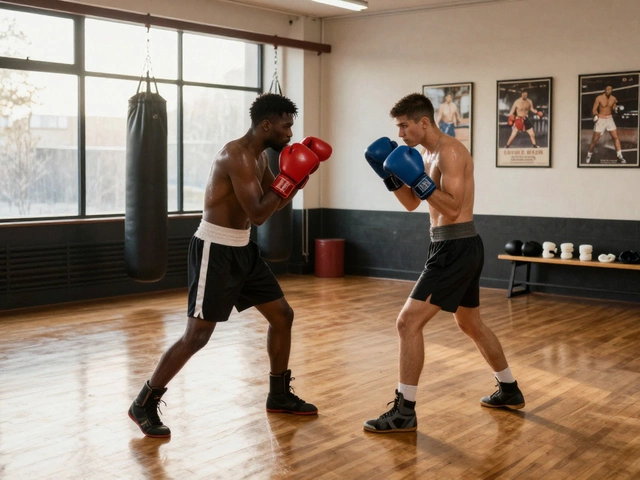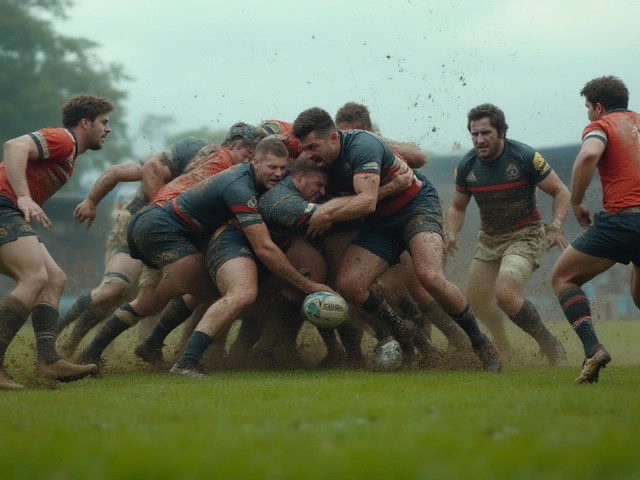Pro Athletes: What Gear Really Matters?

The gear pro athletes use isn't just for show. If you’ve ever seen the difference the right shoes or racket can make, you know equipment can be a game-changer. Ever wonder why sprinters swap their spikes between heats, or why NBA players are so picky about their insoles? Each decision is about squeezing out every bit of performance—and avoiding injury.
But gear isn’t one-size-fits-all. What works for a marathon runner won’t cut it for a powerlifter. Even within the same sport, you’ll see custom tweaks and tech add-ons. And no, brands and sponsorships aren’t the whole story. The stuff that sticks around is what actually helps. Let’s break down what pro athletes really keep in their bags—and why it might matter for you, too.
- The Non-Negotiables: Gear That Every Pro Needs
- Custom-Fit and Personalization—Why Size Really Does Matter
- Game-Changing Tech: Tracking More Than Just Time
- Apparel and Footwear: It’s Not All About Looks
- Recovery and Prevention Tools Pros Swear By
- Pro Tips for Choosing the Right Equipment
The Non-Negotiables: Gear That Every Pro Needs
Pro athletes build their careers on fundamentals—work, focus, and the sports equipment they trust. There’s a short list of stuff that no pro leaves home without, no matter their sport. At the top: the basics. Shoes, apparel, and sport-specific essentials like balls, gloves, bats, racquets, or sticks. If any of these is off, performance drops. No one wins Olympic gold with crummy shoes or a warped bat. Nike’s research even showed that marathon runners wearing their latest performance shoes ran an average of 4% faster. That’s not hype—that’s seconds shaved off a world-class race.
Then there’s protection. Helmets, pads, and mouthguards don’t just tick a safety box; they keep athletes in the game. Concussion rates in football dropped by almost half after stricter helmet standards were introduced in the NCAA.
Let’s make it plain. Here’s what the backbone of any pro’s kit bag usually looks like:
- Footwear tailored for their sport and foot type (think custom-molded insoles for NBA players).
- Sport-specific equipment like racquets (tennis), bats (baseball), clubs (golf), or sticks (hockey).
- Protective gear—helmets, pads, mouthguards, or even just compression sleeves for extra support.
- Reliable apparel that fits like a second skin and won’t chafe, weigh down, or distract during play.
The must-have pieces aren’t chosen at random. They’re tested, tweaked, and backed by experience or even science. For example, a study found that even minor differences in grip size on a tennis racquet can change the risk of elbow injuries over a season.
If you’re building your own setup, get these non-negotiables right first. No fancy tech or extra gadgets will help if the basics aren’t dialed in—and the pros know it better than anyone.
Custom-Fit and Personalization—Why Size Really Does Matter
Ever borrowed someone else’s cleats or bike? Didn’t feel right, did it? That’s because pro athletes never settle for something "close enough." Custom-fitted gear is a game-changer. It can boost comfort, prevent injuries, and even increase performance by a few vital percent—sometimes all it takes to win.
Let’s get specific. Look at the shoes. Runners on elite tracks have shoes tailored to each foot, including custom insoles mapped to their foot pressure points. In the NFL, linemen get mouthguards 3D-molded to their bite. Cyclists and swimmers? They use bikes and caps shaped to their bodies, right down to the millimeter. According to a 2023 study from the American College of Sports Medicine, athletes using custom-fitted equipment reported 25% fewer overuse injuries compared to those with off-the-shelf gear.
"Personalized equipment isn’t a luxury in pro sports—it’s a necessity. It keeps athletes in the game and extends careers,” says Dr. Riley Cook, lead physiotherapist for the U.S. Track and Field Team.
But pros don’t stop at fit; they tweak for style, movement, and even weather. Basketball players adjust the height and stiffness of their socks based on the arena conditions. Tennis stars adjust racket grip thickness—sometimes during a match—to get just the right feel.
Here’s how pros approach personalization with their sports equipment:
- Get measured professionally before picking even basic gear like shoes or gloves.
- Test gear in real practice sessions—never trust just standing in a store.
- Work with techs and specialists who can tweak or create custom molds.
- Be willing to switch up gear as your body or needs change over a season.
If you’re serious about your own game, it’s smart to start with good fit—even if you’re not at the pro level (yet). The right athlete gear isn't about looking cool. It’s the secret edge most people don’t notice—until they try it themselves.
Game-Changing Tech: Tracking More Than Just Time
This isn’t just about stopwatches or basic step counters. Pro athletes these days use wearable tech to get the full picture on everything from sleep and hydration to how much force they’re using in a sprint. Devices like the WHOOP band or Catapult GPS trackers do more than log distance—they measure heart rate variability, impact, and even stress levels. That data goes straight to coaches, who use it to tweak training on the fly.
Basketball players in the NBA are all about shot-tracking hubs that give instant feedback on release angle and speed. Even in the NHL, players have started using sensors in their shoulder pads to measure hits and fatigue levels. Pro soccer teams track not just how far someone runs in a match, but also how many “high intensity sprints” they clock. A study from 2023 showed Premier League players wore tracking units that monitor total output and recovery, helping cut soft-tissue injuries by up to 30%.
Let’s face it—sometimes numbers tell a story your gut feeling can’t. Here are a few tech features pro athletes look for when picking the right gear:
- Advanced GPS tracking with real-time feedback
- Heart rate and oxygen saturation monitors
- Force, jump height, and stride sensors for movement sports
- Sleep trackers that break down REM and deep sleep patterns
- Hydration reminders tied to sweat rate sensors
And you don’t have to be on a millionaire’s contract to get some of these benefits. Even mid-range smartwatches have gotten pretty good at tracking basics. But if you’re chasing that edge, investing in wearable sports equipment that tracks more than time isn’t just extra—it's expected at the pro level.
| Device | Main Feature | Used By |
|---|---|---|
| Catapult GPS | Movement & Impact Tracking | Premier League, NFL |
| WHOOP Strap | Recovery & Sleep Analytics | CrossFit, NBA |
| Polar H10 | Heart Rate Monitoring | Cycling, Triathlon |
If you’re serious about your sport, getting your hands on some of this tech could mean spotting trouble (like overtraining) before it bites. Even my dog Sparky probably wishes he had a tracker for how many zoomies he does after dinner. The bottom line: data-driven athlete gear is a must if you want to keep up with the pros.

Apparel and Footwear: It’s Not All About Looks
For pro athletes, picking the right shoes or outfit isn’t just about matching team colors—it’s about getting that edge where it counts. Think about this: studies show that elite runners swapping to carbon-plated running shoes shaved an average of 1% off their marathon times. That’s not small change at the finish line.
Fit and comfort matter more than anyone admits. If gear rubs, chafes, or just feels off, it can distract athletes at the worst moments. That’s why you’ll see pros fussing over their socks or doing weird warmup routines—sometimes it’s about stretching new shoes just enough before a game.
Let’s break down what really matters with apparel and footwear:
- Footwear: Cushioning, grip, and weight are huge. Pro basketball players change their shoes multiple times in a season to keep traction fresh. Runners often have a shoe rotation for training, racing, and recovery. Some tennis pros go as far as baking their shoes in the microwave for a custom fit—no joke.
- Clothing: Breathability and sweat-wicking are must-haves. Ever worn a cotton shirt for a summer workout? Not fun. Technical fabrics make a difference, especially in outdoor sports. Uniforms for teams like the US Women’s National Soccer Team are often made from recycled plastics—so pros get top performance, and the environment wins too.
- Compression gear: So many track and football pros swear by compression tights or socks. Studies show these can help blood flow, maybe even speed up recovery, even if it’s mostly about feeling better on game day.
Brands love to hype their newest tech, but ask any pro—they’ll say fit and function come first. If a shoe fits weird or if a shirt bunches up under pads, no ad campaign is going to matter. Before you buy anything hyped for athlete gear, try it yourself and see if it does the job for your sport and your body.
Recovery and Prevention Tools Pros Swear By
If you think pro athletes just push through pain, think again. Recovery and injury prevention are part of the job, and honestly, the real difference-makers. The modern sports world is flooded with gear meant to help muscles heal faster and stay healthy, especially when the next big event is only days away.
Let’s cut to the chase—every locker room has foam rollers, massage guns, resistance bands, and ice packs. Those aren’t just for Instagram. They hit knots, keep muscles loose, and cut down on soreness. The NBA reported in 2023 that over 70% of pro players used percussion massage guns like the Theragun or Hypervolt after games. These devices increase blood flow and speed up muscle recovery, so you can see why teams invest in them.
For anyone dealing with swelling or minor injuries, cold therapy and compression sleeves are the go-to. Soccer and football players swear by pneumatic compression boots (think hefty moon boots that squeeze your legs). These help flush out lactic acid and reduce swelling in under 30 minutes. Companies like Normatec and Air Relax keep popping up in team training centers. Check out this quick rundown of what you’ll find pros using in almost any top gym or training room:
- Foam rollers and massage sticks: Loosen up tight muscles and hit deep knots.
- Percussion massage guns: Target sore spots and boost blood flow after workouts.
- Compression sleeves: Keep blood circulating and reduce swelling during travel and long workouts.
- Pneumatic boots: Heavy-duty recovery after intense sessions or matches.
- Ice packs and heat wraps: For immediate relief for sprains or strains. Old school but always needed.
- Resistance bands: Used both for stretching and small muscle strengthening to prevent injury in the first place.
Tech has even made its way into recovery tracking. Wearable sensors and smart patches can show how much effort your muscles need to bounce back. Take WHOOP and Oura rings; they’re now a normal sight in the athlete gear world, with coaches using stats to tailor daily routines and rest days.
Recovery isn’t complicated, but skipping it is a recipe for injury. So if you want to train like a pro athlete, don’t just focus on the flashy stuff—invest in the stuff that helps you show up again tomorrow.
Pro Tips for Choosing the Right Equipment
You don’t have to be a millionaire or sponsored by a cool sports brand to get gear that works for you. Here’s what pros and their coaches actually pay attention to when picking sports equipment for real performance results.
- Fit Comes First: It might sound basic, but a snug, personalized fit trumps brand or hype every time. Pro runners have their feet scanned for custom insoles. NBA stars switch up their shoe lacing patterns for different games. If your gear feels even a little off, it’ll mess with your focus and your body.
- Test Before You Trust: Don't just grab whatever your favorite pro is using. Almost every pro athlete spends weeks testing new performance tools during practice, not in big games. Borrow, rent, or try demo models before shelling out for anything.
- Quality Over Quantity: No need to load up on extras. A 2024 survey found 79% of pro athletes use fewer than 10 core pieces of athlete gear in their daily prep. Each piece has to earn its spot by delivering results or comfort.
- Listen to Your Body (Not Just the Sales Rep): Watch for new aches and pains. If you're suddenly feeling sore somewhere new, your gear might be the reason. pros check with team physios the moment something feels off—so don’t ignore those little red flags.
- Tech Isn’t Always Better: High-tech gadgets can be fun, but only if they fit your routine and sport. A simple stopwatch got Eliud Kipchoge through more miles than GPS watches would. Weigh tech’s actual benefit, not just the fancy features.
| Equipment Type | Pro Tip | Common Mistake |
|---|---|---|
| Running Shoes | Shop late in the day—feet swell with use | Focusing only on style or brand |
| Wearable Tech | Start with basic models, upgrade once it’s part of your routine | Buying pricey gear with features you’ll never use |
| Protective Gear | Replace after every big impact, even if it looks fine | Keeping helmets or pads too long |
Couple more things pros swear by: check online reviews written by actual athletes—not just influencers. And don’t skip local shops. Staff there often play or train, and their advice can save you from some expensive mistakes. Most importantly, break in your gear before game day. I’ve seen seasoned athletes get blisters from brand-new cleats because they didn’t. Learn from their pain, not your own.




